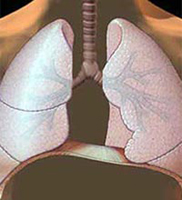Radiation therapy is based on the use of radiation to influence the molecules of affected cells. Tumor cells are most sensitive to radiation therapy compared to healthy tissues. Two ways of applying radiation therapy have been developed.
Content
The concept of radiation therapy
 Radiation therapy (or radiotherapy or radiation irradiation) is a highly efficient narrow method of exposure to fabric. It is mainly applied after the operation for the purpose of «finally» The remaining tumor cells.
Radiation therapy (or radiotherapy or radiation irradiation) is a highly efficient narrow method of exposure to fabric. It is mainly applied after the operation for the purpose of «finally» The remaining tumor cells.
Many patients with caution belong to radiation therapy, believing that the effects of radiation on all their organism occurs. However, this method is easily transferred, compared, for example, with chemotherapy, and side effects are limited only by the application location.
Radiation therapy can reduce the risk of breast cancer by 50-66%.
The basis of the method of radiation therapy is the use of radiation. This radiation is the so-called ionizing radiation, which is a type of gamma radiation. In the penetration of this radiation, the gamma particles are knocked out from organic electrons from organic molecules, resulting in ionization. As a result, the destruction of the cell structure occurs. This is the principle of radiation therapy. Although radiation affects healthy cells, tumor cells are much more sensitive and therefore it is destroyed much faster. In addition, cancer cells do not possess the restoring abilities that are in healthy breast cells.
Methods for applying radiation therapy
The external use of radiation on the affected fabric is the most frequently used method of radiation therapy. When using this method, a special device is used - linear accelerator of charged particles. It forms a beam of radiation, which is directed to a particular area of the body. Such treatment is carried out outpatient, that is, the patient will have to come every day to radiation radiation within 5 days a week. The course lasts from five to seven weeks, depending on the situation.
Sometimes such irradiation can be carried out in smaller doses twice a day - this is the so-called hyperfractionial radiation therapy. Although this kind of radiation therapy is associated with more pronounced side effects, in the remote period of these effects much less.
Before the procedure of radiation therapy, usually on the skin in the area where irradiation is assumed, the point marker is applied in order to designate the direction of the beam. These marks are saved throughout the course of radiation therapy.
The patient during radiation therapy is recommended to wear comfortable and loose clothing. This is due to the fact that radiation may cause skin irritation, and tightly adjacent clothes run about the skin, reinforcing discomfort and discomfort.
Very often the patients fear that radiation therapy leads to the radioactivity of the place where it was attached. It's not at all. As soon as the irradiation procedure ends, there are no traces of an increased radiation background in this area.
Internal radiation therapy, or bochiterapia - is the type of radiation therapy, in which the radiation radiation source is installed directly in the tissue, affected by the organ. With this form of irradiation with radiation, the source of ionizing radiation are radioactive objects in the form of grains, ribbons or capsules. These items are installed directly into tumor tissue or in nearby fabrics. Installing them is carried out with a thin tube called catheter. Usually before the catheter is introduced for the radioactive substance setting, this area is anesthetically. Internal radiation therapy can be carried out in three ways:
- Small doses radiation
- High dose radiation
- Permanent radiation
When radiation in small doses, the radioactive substance remains in the affected tissues of the breast for 1-7 days. The course of such treatment patients are held in the hospital. After the end of treatment, the doctor removes a catheter or an applicator with a radioactive substance.
During the use of radiation in high doses, the radioactive substance remains in the tissues of the breast for 10-20 minutes. The course of such treatment can flow within 2-5 days twice a day or once a week for 2-5 weeks. The patient can be the whole course of treatment to be in the hospital, or to spend the night at home, but every time to come to treatment.
For constant radiation, the radioactive substance is introduced into the tissue of the breast, after which the catheter is cleaned. Thus, the radioactive grain remains in the tissues, and radiation gradually weakens. At the same time, at first it will be necessary to limit contact with other people in order not to expose them. It is worth noting that with this method of radiation therapy of breast cancer, physiological discharge (urine, sweat, saliva) will not emit radiation.









